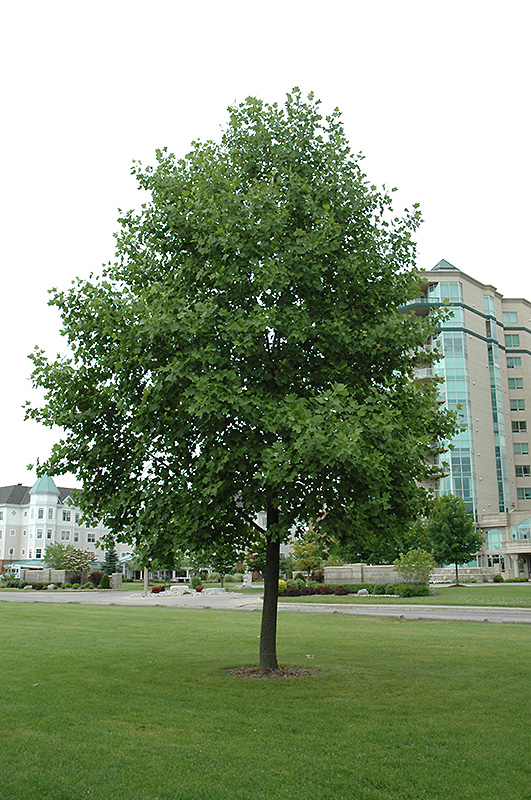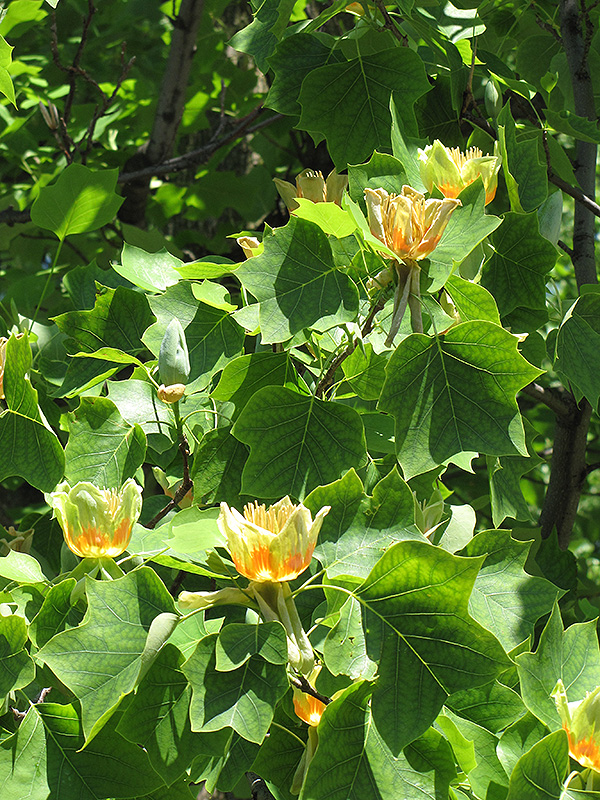Height: 90 feet Spread: 50 feet
Sunlight:
Hardiness Zone: 4 Other Names: Tulip Magnolia, Yellow Poplar, Whitewood Description: One of the tallest native trees of eastern North America, features uniquely shaped leaves and large yellow tulip-shaped flowers which are hard to see because of the height of the tree; needs lots of moisture and room to grow, not for small properties Ornamental Features Tulip Poplar Tree has buttery yellow cup-shaped flowers with yellow eyes and orange centers held atop the branches from mid to late spring. It has emerald green deciduous foliage. The square leaves turn an outstanding gold in the fall. The furrowed gray bark is extremely showy and adds significant winter interest. Landscape Attributes Tulip Poplar Tree is a dense deciduous tree with a strong central leader and a distinctive and refined pyramidal form. Its average texture blends into the landscape, but can be balanced by one or two finer or coarser trees or shrubs for an effective composition. This is a high maintenance tree that will require regular care and upkeep, and is best pruned in late winter once the threat of extreme cold has passed. Deer don't particularly care for this plant and will usually leave it alone in favor of tastier treats. Gardeners should be aware of the following characteristic(s) that may warrant special consideration; Tulip Poplar Tree is recommended for the following landscape applications; Planting & Growing Tulip Poplar Tree will grow to be about 90 feet tall at maturity, with a spread of 50 feet. It has a high canopy of foliage that sits well above the ground, and should not be planted underneath power lines. As it matures, the lower branches of this tree can be strategically removed to create a high enough canopy to support unobstructed human traffic underneath. It grows at a fast rate, and under ideal conditions can be expected to live to a ripe old age of 120 years or more; think of this as a heritage tree for future generations! This tree should only be grown in full sunlight. It prefers to grow in average to moist conditions, and shouldn't be allowed to dry out. It may require supplemental watering during periods of drought or extended heat. It is not particular as to soil pH, but grows best in rich soils. It is quite intolerant of urban pollution, therefore inner city or urban streetside plantings are best avoided. This species is native to parts of North America. Disclaimer - This Plant Finder tool is an online resource representing many of the varieties that we carry over the course of the season, and is intended for informational purposes only. Inventory varies seasonally, so we cannot guarantee that every plant will be in stock at all times - please contact the store directly for current availability. It does not include our entire selection of plants, so be sure to visit our store to see varieties that may not be represented on this list.All Seasons Plant Finder
![]()
![]()
![]()
![]()
![]()
![]()
![]()
![]()
![]()
![]()
![]()


